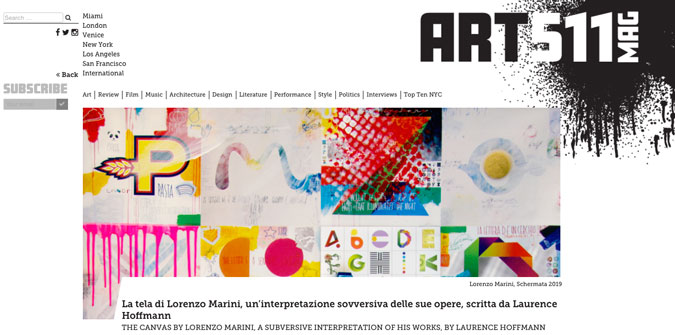ART511 Magazine, www.ART511MAG.com Articles
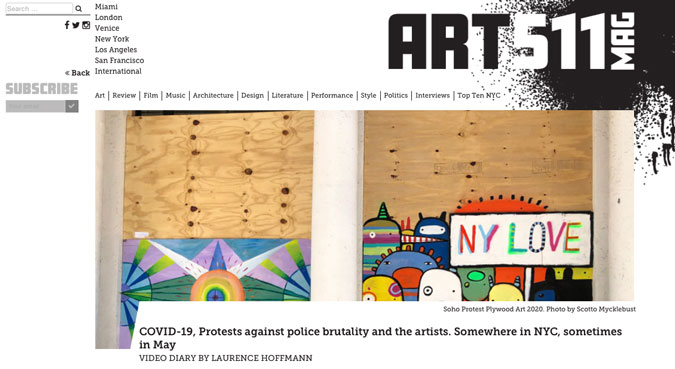
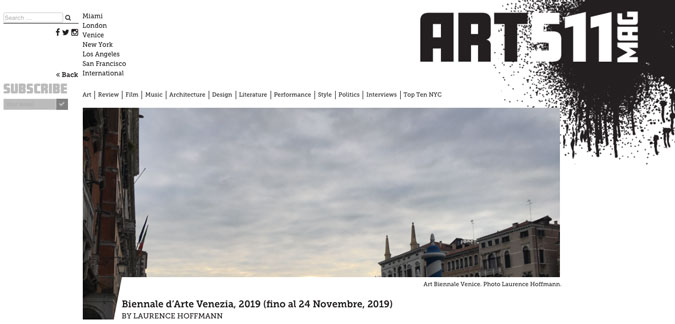
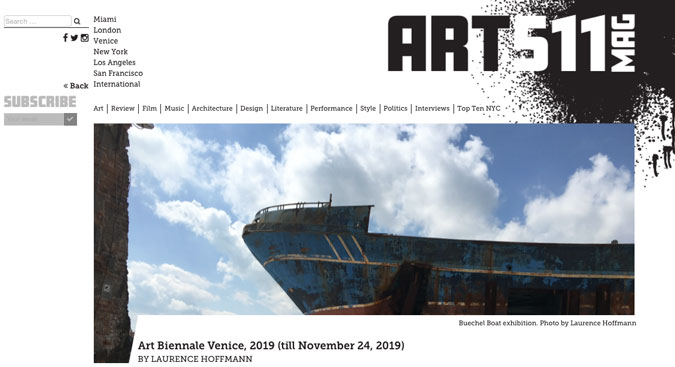
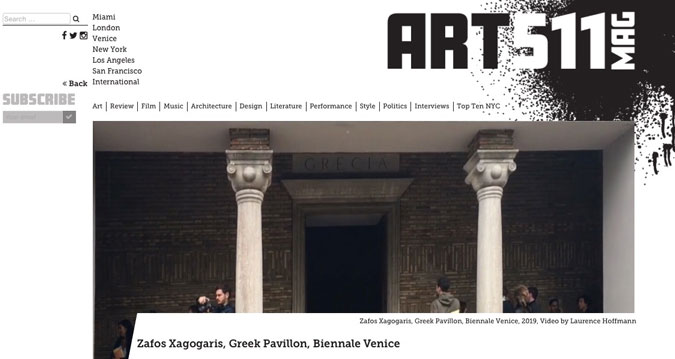
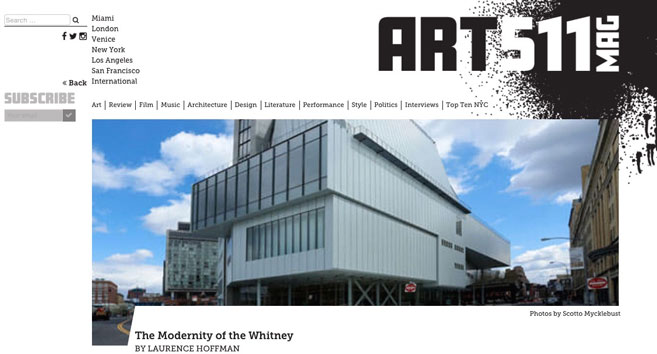
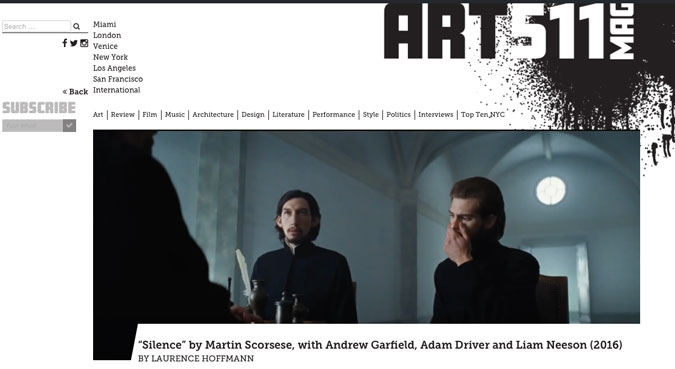
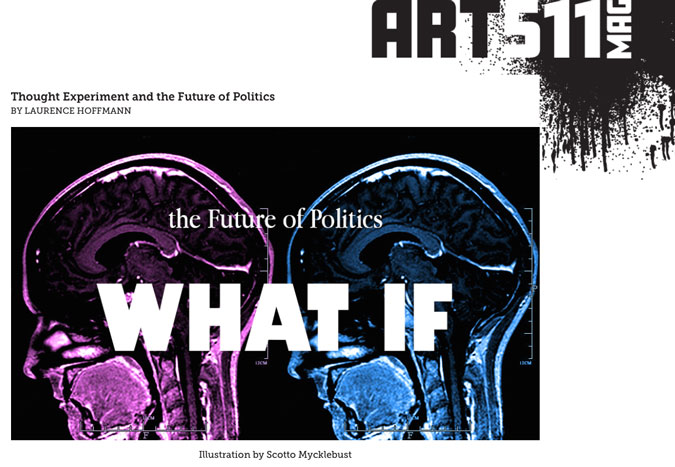
Thought Experiment and the Future of Politics
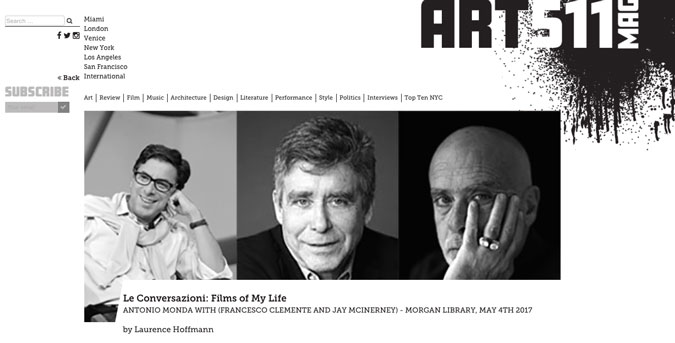

Mother! By Darren Aronofsky with Jennifer Lawrence, Javier Bardem
Tears and flames envelop a face. A diamond exhales a regenerating energy all around by reconstructing the house from its ashes. It’s a home with multiple rooms and floors and mezzanines. Only later do we discover that the house has a spiral shape and the centerpiece has a labyrinth floor and is dominated by a glass dome. Wood, iron, stone and glass comprise the materials of the house.
From the sheets of a large bed in front of a large window immerged in sunlight, a young woman awakens. She’s obviously looking for the person who might have been lying next to her. Her scream “Baby!?” is left unanswered. We follow her in a sort of reverse path through the rooms. Even though the house is big, our tightness to the young woman pervades us with a sense of frantic suffocation.
She is beautiful, with a most angelic face and a sensuous body revealed through a sheer gown. When she finally opens the door on the ground floor, from the woods outside appears a man. They share a quick embrace as he hastily moves away from her ashamed of his bad odor to run to shower.
We are left to imagine the refreshing and purifying effect of water.
Natural elements, symbols, the voyeuristic relationship of the audience with this couple builds up swiftly throughout the film, lulling the viewer into intermittendly as if watching a ghost movie, a psycho thriller or participating in a philosophical essay on the devilish nature of religion.
The young woman craves respectfully for the attention of the man. She takes care of him and is rebuilding the house, he is a poet struggling to rediscover the creative vein. A quasi paradisiac atmosphere reigns in the house until it is disrupted by the intrusion of a guest in the form of a somewhat older man. The two men get along immediately. The guest is an admirer of the poet’s work and clearly quite ill. Soon after the guest’s wife and in rapid sequence their two sons enter the house, demanding of the young woman who she is with a tone that reveals blatant annoyance. This impromptu appearance of the new figures announces the drama that will unfold with violence. The hope for peace and love is dissipated by violence and death. In the meantime, the diamond that the poet was caringly keeping to infuse him strength, has been broken into pieces by the Man and the Woman. They apologize to the poet who seethes with rage but resent him for not being simply pardoned.
Months later, the young woman is pregnant and the house restored. There is something peculiar about the house that makes it into an important character of the narration.
Paradise is soon again lost, through vanity, greed, violence and death.
The only solution is the absolution of sins through the hell of fire. Or is it?
If the above is a partial reconstruction of the narration, it is also only a pretext to interpretation. An interpretation that could be easily supported by the comparison with previous works of the filmmaker. An interpretation that claims “Mother!” as a masterpiece. A work of art.
In “Mother!” the characters are not given names but rather defining gestures so that the narration is inhabited by the young woman soon to be mother, Madonna or Mary Magdalene, the first visitor an orthopedist as Abraham in the temple of God, the sinful woman and mother of two litigious Cain and Abel, the devotees enjoying a luscious feast, quickly degrading into an aberration of greed, envy and sloth. Meanwhile the poet feeds upon his proud vanity and sacrifices his Son on the altar, the house is a symbolic womb or with its circular floors, a Dante-esque descent to Hell, becoming an organism of its own nurtured by the blood of the dead child.
The hysteria of the masses invested in religious devotion culminates in destruction of the wars throughout history but the universal deluge may not yet absolve humanity.
Not even the ultimate sacrifice of the young Mother, disembodied of the last thing she can give – love - will suffice to liberate humanity from evil. Everything is circular. As the perfect form of the circle indicates eternity, the diamond only when whole has a healing power. Through it emanates light. Meanwhile the house turns to ashes and is rebuilt amid a clearing. The Lichtung, in the words of German philosopher Heidegger (“Being and Time”).
The light of God is false. God is the poet. Him. With the grin of Satan.
All of the above is only a clue for the meaning of the film. More cultural references (from history and literature with great regard for paintings) can translate each clue into a slightly different message. But overall, one can understand that there is no real hope here for humanity.
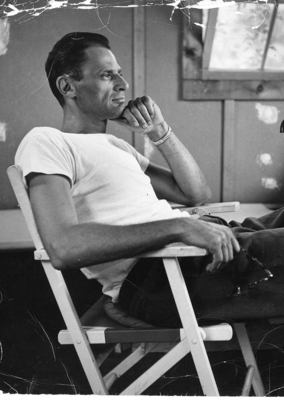 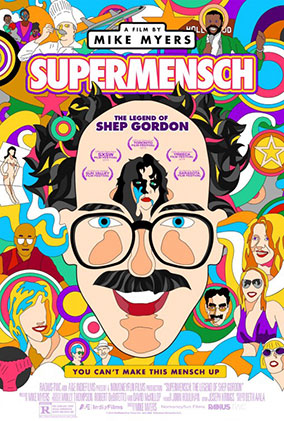 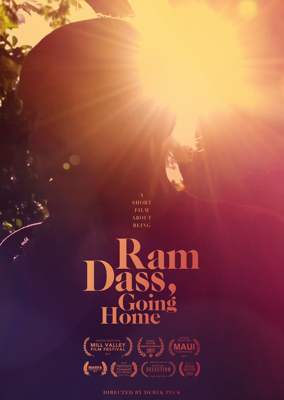 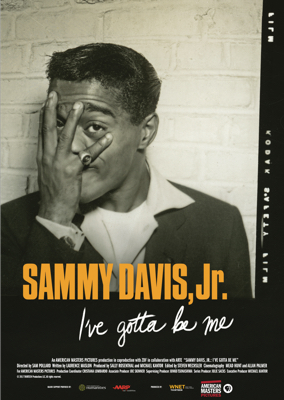
Woodstock film festival 2017
Woodstock is a mythical place sparking images of colorful joyous youth, evoking creativity and freedom, a sense of community and craving for individual independence.
It was August 1969, when a music event became the symbol of a generation and of a mind set still desired.
Now, in the early days of the fall, surrounded by colorful leaves, the little town is the stage for film lovers to gather to discuss and enjoy movies.
Founded in 1999, the festival has a balanced program of American indie premieres together with a few international productions, across genres of fiction, documentary and animation, both shorts and feature length films.
Woodstock Film Festival (WFF) belongs to that array of festivals with a cozy audience predominantly composed of members of the local community and a respectable quality of programming, which offers a unique opportunity to engage with the filmmakers.From an outsider perspective it is a missed opportunity for a festival to be the window of the salon that is the New York City scene.
And yet, WFF hasn’t hesitated to embrace VR-Virtual Reality into its program with four pieces (curated by Carol Silverman and Dario Laverne), positioning itself among the most influential film festivals that recently have started featuring the new media.
The intimate scale of the festival and the quality of the programming make WFF a delightful event. Little gems can be enjoyed.
In the documentary section, one can appreciate movies about spirituality (“Ram Dass, Going Home” by Derek Peck a fairytale about death not intrusive conversation, evocative image supported by words), about social criticism and the disparity in contemporary American society (affecting mostly the black middle class in “Against All Odds: The Fight for a Black Middle Class with Bob Herbert”, a delicate and poignant documentary on key issues of social discrimination, or featuring celebrities as investigators on relevant social issues presented in a MTV style cut of Richard Rowley in the doc “The Cycle (America Divided)”, or the question whether the icon Sammy Davis Jr. was a groundbreaking performer or an ‘’Uncle Tom’’ figure in “Sammy Davis Jr: I’ve Gotta Be me” by Sam Pollard, a documentary with a strong narrative and an inspiring character exploration), about climate change and how to save the environment with innovation (in “Happening: A Clean Energy Revolution” by James Redford), about the creative process of a writer in the foreground of a changing society and the family life (in "Arthur Miller: Writer” by his daughter Rebecca or in the intimate portrait of the singular artists manager with a big heart in ”Supermensch: The Legend of Shep Gordon” by Mike Meyers and Beth Aala) or about the gender revolution in the fashion industry (in the sincere portrait of the first transgender in ”This is Everything: Gigi Gorgeous” by canon film maker Barbara Kopple).
A five day long weekend in the coziness of the woods and great cinema, so refreshing, before re-entering the urban jungle of NYC.
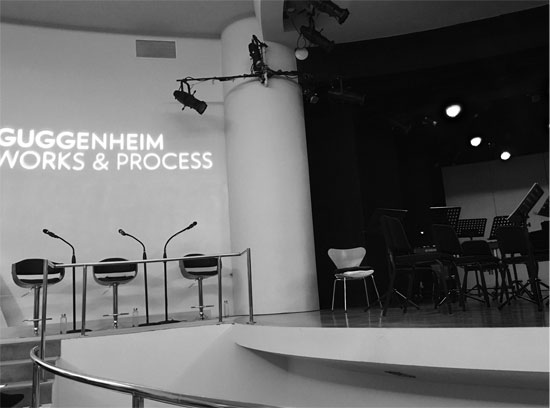
A TASTE FOR STEVE REICH's COMPOSITIONS
by Laurence Hoffmann (September 2017)
Location: Guggenheim, Peter B. Lewis Theater, just beneath the Rotunda for Works & Process, on October 17, 2017.
Blue lights light the stage, chairs and music stands orderly positioned, three chairs on the side with their own spotlights.
Steve Reich enters, silent, clad in black with black cap. The evening unolds with tones and words to a packed room...The works of Steve Reich are played by the Ensemble Signal under the direction of conductor Brad Lubman. Since 2006 Steve Reich has worked with other ensembles, after a career with his own ensemble established in 1966.
This is an open rehearsal and a wonderful occasion to experience the mind of the conductor interpreting the intentions of the composer, to hear their exchange about “tenere sempre” (maintain steady RHYTHMS), structure, variations, modulating the notes, tamberous, quasi Mahlerian tempo. Whilst construction gives durability, the emotions are central.
Two pieces are rehearsed, partially presented, in preparation of the November 2 concert at Carnegie Hall: “Runner” and “Pulse”, evocative as well as descriptive titles.
The moderator skillfully enlightens the audience about Steve Reich’s background, bringing into the conversation references to traditional Indian music, the beats of Ghanese drums, Daft Punk, Donna Summers, electronic dance music base, and piano of Jerry Lewis.
If the fear might have been that to participate to the rehearsal enhanced with explanations could have deemed the magic of the musical works of art, it was quickly replaced by the amazement about the richness of multiple cultural influences and the originality of Steve Reich’s compositions for orchestra.
Thought Experiment and the Future of Politics
by Laurence Hoffmann (May 2016)
Thought Experiment is a very noble method used since the beginning of civilization to explore new situations without necessarily endangering one’s life and with the purpose of realizing some form of progress. It has been applied mostly to scientific and to philosophical investigations.
The main characteristic of the method is the “what if,” what would be the case if a determined situation were the case. It is based on a (set of) hypothesis without pre-judgment even though denoted by skepsis.
Let’s experiment and apply this method to the political landscape in America today.
Question: For which of the two democratic candidates (Hillary Clinton or Bernie Sanders) would people vote once they were confronted with the content of their programs, without having ever been influenced by other people’s opinions?
Imagine we could invite individual “investigators” of any age, gender, sexual orientation, racial, cultural or social background to participate in our investigation based on the following qualifiers: the individual has lived in America for the past 40 years and has a current individual yearly income ranging from $30,000 and $100,000.
Imagine this group would listen (not watch, just listen) to the best and worst of the spoken words amongst the whole range of the two candidates’ speeches and interviews.
Imagine the topics were defined as follows: the constitutional right of every American to equally and fairly pursue happiness; the still lingering discrimination based on gender, racial or religious background; workers’ rights and conditions, specifically wages and benefits; the educational system and the penalty system; the broad range of current environmental issues; the role of America in the world and this in relationship to national security and the threat of terrorist attacks.
Imagine that, in line with the methods of this experiment all investigators agree that every action enchains a reaction. Poetically speaking, the shaking of the wings of the butterfly in one part of the earth can create a wave in another part.
Imagine that this large group of investigators would decide for which candidate they would vote based only on the candidate’s political words during the last 40 years.
Imagine now a twist. The experiment would unfold in two phases. Initially, the investigators would analyze the political program without considering the more or less realistic outcome. Then, they would be solicited to make an analysis considering the current political landscape (especially the formation of congress today and what it could be “if” tomorrow).
Imagine we would select among the investigators a proportional number of people, again, of all ages, genders and sexual orientation, of all racial, cultural and social backgrounds, with a diverse range of individual income, and split this group into pro-Hilary and pro-Sanders, and imagine this group would then be granted the opportunity to discuss their different points of view.
Imagine they were given the very objective criteria to evaluate their candidate’s words in terms of consistency and alliances.
Do not forget that the investigators were given the chance to listen to the best and the worse of the candidates.
Now again we would introduce a twist. Imagine that at a certain moment of the discussion the investigators would have the opportunity to watch images of the candidates, again, both at their best and their worst, during the past 40 years of our contemplation.
Imagine the investigators would briefly change sexual orientation, religious beliefs, occupation and living conditions within the range of possibility given as a premise of our thought experiment for the purpose of being granted the opportunity to experience the beauty and the hassle of being someone else including the advantages and burdens of that new self. (Certainly this is the extreme form of the thought experiment!)
Imagine…. Imagine…
What about reality?
Imagine I could ask you, dear reader, what is the issue about which you care the most? Social injustice, environment, scientific progress, economic stability, culture, immigration, terrorism, leisure or other?
Which candidate has stood for your cause consistently during the past 40 years? Which candidate has to apologize and how often for a bad choice made?
Let’s narrow our focus now to the current, most recent political landscape of the past two months. My last question to you the reader would be: how come nobody ever questions Bernie Sander’s consistency and integrity on the issues he has tackled in the past 40 years (you may like his approach or not) and nobody has never doubted that he is indeed talking about real, not imaginary, issues, but on the contrary a lot of Americans still wonder if they could ever trust Hilary, who has had for 40 years different platforms and great visibility to express in her own words what she believes in and fight for it? (Please continue to disregard what corrupt opinion makers, envy etc., might have suggested).
Finally, how come Hilary, after having planned this race (and the previous race) for president for so long, finds herself, still in recent days, changing her mind (admitting she is indeed changing her mind and not only vocalizing something different to opportunistically please)? How come she sounds more and more like Bernie? Is it perhaps because Bernie’s message and position is not so wrong or off after all? Is the question then if a rightful position can be realized in the foreground of the current political landscape? It looks difficult given a bi-party system where Republicans would oppose Democrats just by principle.
Is it impossible? To answer, I would suggest we look at history to find that Roosevelt and Kennedy have been heralds of the same political program as Bernie. And they achieved the change when it was equally if not even more difficult (think of the Great Depression and the achievements of the New Deal still in effect today).
*** *** ***
Many months after the drafting of this article, Donald Trump was inaugurated as president of the United States. I could not prevent myself from thinking: what if we were just trapped in the Twilight Zone? What if this was a bad dream? What if this was a godly lesson to humans to understand the value of a truly democratic society that doesn’t leave anybody behind who can transform themselves into a monstrous antagonist?
At this point, I just wonder how the revolt of those who finally had their voices heard after having been for so long disregarded is going to affect the somehow arrogant assumption by the intelligentsia of having fully comprehended today’s society.
How much longer can we keep laughing?
And yet, after all this experimenting in our minds, I would like to finally invite each of us, to be as objective as possible and to do a better job than corporate media in presenting the facts and to offer our interpretation. Let’s back up our opinions with videos of events and speeches. I would especially invite each of us to continue to foster dialogue. It is the very essence of the democratic values to defend freedom and education and to deprecate discrimination.
I will do all I can to support organizations that have been active for decades. And I remain an engaged member of “Our Revolution”.
“Silence” by Martin Scorsese, with Andrew Garfield, Adam Driver and Liam Neeson (2016)
By Laurence Hoffmann
It is not the journey, but the spiritual quest, not the words of the missionaries, but the silence of God around which develops the narrative of “Silence.” More than a film, it is a reflection on the very essence of the credo. It is a film which is not about the events therein, but a delicate process of inner transformation and how it is achieved. Through images, Scorsese engages in an exploration of meaning. This might sound abstract. To explain more fully, I must first reveal the storyline of the film.
Two young priests are granted permission to travel to Japan to rescue their mentor.
It is 1633. Missionaries have been attempting to spread their Christian doctrine to poor farmers but together with the newly converted were fiercely persecuted by an intolerant government. Believers were forced to stomp on the icon of the Virgin Mary and priests driven to tread upon the icon of the martyred Jesus.
Andrew Garfield and Adam Driver play the two missionaries that journey to Macao to find a refugee who will accompany them to his home country Japan. Seas and forests, foggy nights, tormented farmers, and the constant threat of being discovered stresses the darkness surrounding the trip. After having hidden in a village and witnessing the cruelty of repression, the priests decide to go their separate ways. One priest will travel to other villages to bring Christian relief, the other will go in search of their mentor.
Finally, it is the young priest played by Garfield that has to prove the strength of his belief and its inner meaning. How much pain of the disciples can he endure witnessing? How can he help the imploring converts find eternal love? How can he best serve the Church? Will his death guide him to paradise or will his condescension to the repressors allow him to discover a new path to God? He ultimately meets Father Ferreira and together with him continues to abide by the Christian doctrine. Their work is only seemingly in service of the Japanese government. A subtle process of learning Japanese cultural differences ensues with the final result being the translation of Christian values to the interested converts.
The film goes much deeper than the surface of the storyline. It’s value as a historical text shedding light on a cultural moment we might liken to the Inquisition is interesting but not comprehensive of the film’s goals.
Scorsese’s film is about those deeper questions. What does it mean to believe? How to be true to what you believe in? How to relate your inner self to others? These questions resonate in the main character’s head. He is tormented by them. Everything surrounding him is the set for his inner thoughts.
I found some aspects of the film of particular interest in this respect. Father Ferreira’s sacrifice, the young Japanese exile’s apparent confusion, and the tablet representing the Virgin Mary and Jesus Christ are the most meaningful symbols representing what it means to Believe.
Liam Neeson’s character Father Ferreira, even if the most absent from the screen, is the core of the story. He is the mentor (the impetus of the journey). He is the one who clearly explains the failure of the mission in terms of the teachings of the church (the new converts do not follow the Bible but rather the tellers of the story, the priests). He is the model that the survivors will follow (the surviving priest will emulate him). He is the new Christ: the one who pursues the mission of bringing the gospel to the Other. Given the language barrier, the Japanese will never completely understand Christianity as inculcated by the Church. Indeed, language is a system of words that refers to something undeniably tied to culturally-relative lived experiences.
The young Japanese refugee’s constant repentance is the most humorous representation of the fundamental misunderstanding and abuse of the Doctrine. The repentant-believer’s character hints on how it is simply opportunistic to repent out of fear and guilt more than catharsis.
The holy icons are the symbols of the religion, but religion must go deeper than a mere object. Defiling the icon does not signify the negation of spiritual identity with the Christian message. The teachings can be spread without the icon itself, which were in fact created by the church to achieve the subjugation of the believers, often illiterate peasants. On both occasions, the Japanese people and the Church missionaries both exert their power.
Scorsese reveals here a criticism of the Church as the barrier of true Christian values carried within the heart.
From this story we can find value in cultivating a deeper, internalized sense of spirituality which does not succumb to or rely on a dogmatic system of values dictated by an institution.
Ultimately, the Mission could succeed despite the Church, by way of education and understanding experienced across cultures.

WINTER JAZZFEST NYC
By Laurence Hoffmann
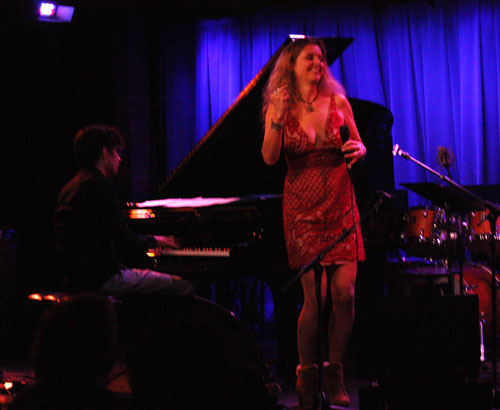
Photo caption: Fleurine featuring Boys From Brazil at Subculture, 45 Bleecker St. NYC. Photo by Sean P. Murphy
Winter Jazzfest offers a unique and exceptional showcase of established and emerging talents performing in various clubs around Washington Square Park and the New School in NYC. Musicians from all over the USA and throughout the world will perform to please, evoke and provoke. Nothing here to frown about: provocation is a form of civil education. The very essence of jazz, is indeed, an expression of resistance as its roots are preeminently in slave songs. “Jazz is freedom of expression,” said Duke Ellington.
This year, Winter Jazzfest is consciously curated with social criticism in mind. Many of us would certainly agree with Brice Rosenbloom, NYC Winter Jazzfest Founder/Producer, that one shouldn’t be absent-minded vis a’ vis the current political landscape.

Photo caption: Darcy James Argue's Secret Society at Subculture, 45 Bleecker St. NYC. Photo by Sean P. Murphy
The only positive outcome of the election may be that very few have remained silent in the face of our president elect’s utter deviousness. In ways large and small, actions are being taken to express disagreement with Trumpism. The Winter Jazzfest’s bold declaration to include social justice in this year’s programming reverberated in the quotes from festival musicians on the website. Conferences on the role of music today approached topics such as “Social Justice and the Role of Music” and “Social and Environmental Discussion.” These community dialogues encouraged artists to continue performing great music and speaking out! Several of the concerts throughout the week buzzed with questions of social responsibility and the possibility of social change.
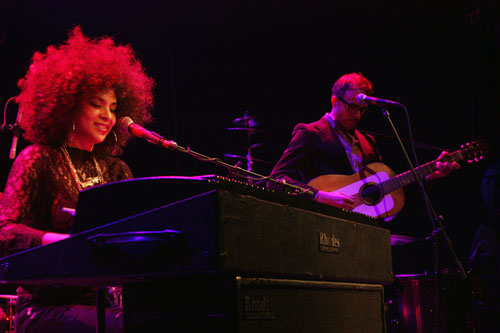
Photo caption: Kandace Springs at Bowery Ballroom, Revive Music Stage, 6 Delancey St. NYC. Photo by Sean P. Murphy
Some of this year’s Winter Jazzfest musicians displayed a blatant verve for social criticism and activism. Darcy James Argue interjects poetical performances of his orchestra Secret Society with recordings by JFK. Terri Lyne Carrington performed accompanied by instrumentals and a DJ who remixed her otherwise standard performance with historical speeches by Angela Davis, Tupac Shakur’s mother Afeni and James Baldwin. Marc Ribot, who performed with The Young Philadelphians during a concert in which experimental funky jazz intermingled with classical music tones, has long been an outspoken member of the Creators Content Coalition, an independent action group mobilized to protect musician rights and copyrights, which boasts members like Melvin Gibbs, Rosanne Cash, David Byrne, T Bone Burnett, Tom Waits, and John Zorn to name a few.
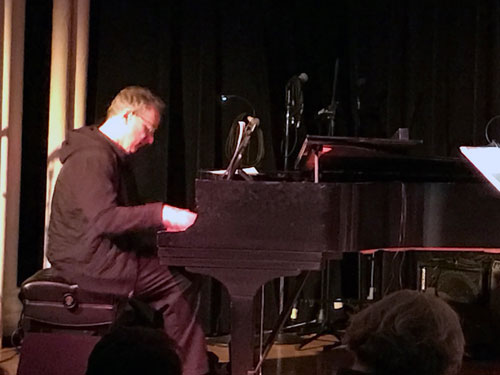
Photo caption: Uri Caine Trio at New School Glass Box Theater, 55 West 13th St. NYC. Photo by Sean P. Murp
The Liberation Music Orchestra (LMO) was created in 1969 by Charlie Haden in response to the 1968 National Democratic Convention’s unrest in Chicago. The politically-situated Orchestra group used music as a vehicle to express opposition to societal repression and the war in Vietnam. Samples of the 4 albums Charlie Haden produced with LMO translating folk and pop into Jazz include David Bowie covers, “This is not America”, “Amazing Grace” and “America The Beautiful.” The collection also features a song dedicated to Che Guevara.
Amidst a larger industry determined to dumb music down to a formula befitting capitalist drives for escapist entertainment, Winter Jazzfest 2018 is certainly something we can genuinely look forward to knowing the political urgencies of our era will occupy center stage.
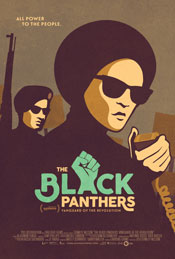
By LAURENCE HOFFMANN
Organized revolt didn’t leave strong heritage and yet the issue is still burning: Black Panthers Vanguard
A marvelous documentary filled with extraordinary and incredible archival material tells pretty exhaustively the story of the Black Panthers Party. It puts the spotlight mainly on the beginning and the time when the movement was leading actions against injustices and focused on a narrative of social engagement beyond the barriers of race. Unfortunately the movement was based on few personalities who drifted apart when narcissist expressions came in the foreground of the common message. Exactly what can be viewed as the strength of the Black Panther Party, the institution of food programs, insurances, community activities, became one of the main reasons of dispute for the founders that believed in armed fight against police and FBI persecution.
The archival material shows the Black Panther as a group and celebrates Huey P. Newton, Bobby Seale and Eldridge Clever for the eponymous leadership. The interviews on the other side are more critical of the whole movement transpiring a sense of loss.
Nevertheless, one cannot help from feeling disappointed that the movement couldn’t find ways to carry on the commitment towards a more justly society. The wonderment is indeed if todays unfair killings would have been prevented were the Black Panther Party still around.
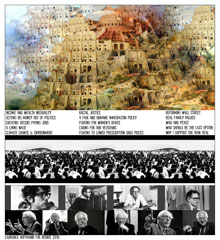
Published in REVOLT MAGAZINE Special Edition
By LAURENCE HOFFMANN, July 27, 2015
Bernism and the cultural revolution
Is Bernie Sanders movement already setting the parameters for a cultural revolution?
He calls it a “political revolution”, but what happens when the way of thinking, behaving and each citizen’s role in society changes?
Is Bernie language changing the way democracy might be ruled in the future through his habit and ability to name things for what they are and by exhibiting facts to support arguments?
Are education (free college), health (insurance for everybody), employment (more jobs, minimum wage and paid leave/vacation), security (integrated community police), environment (climate change), fight against discrimination (race and gender inequalities), thankfulness (to the veterans), freedom/privacy (Patriot Act), going to be reinstated as main values in a society granting to all its citizens the ability to “pursue happiness” (as is inscribed in the Declaration of Independency)? Would it be sufficient to tax all gain from investments (not on work) to collect money to support social programs and grant equal opportunities?
Will Bernie’s choice not to fund his campaign with money from corporations and not to promote his politics with dismissive ads broadcasted on corporate TV marginalize corporations and corporate media? Will social media keep up to be the platform where people share interests and opinions? Is social media a platform where everything is relative and at the same time everything is absolute consistently in development (see the new ridiculous trend of selfies among candidates)? Will Bernie continue to gather the masses and persuade individuals not so much to donate (even if in 2 months he collected 1/3 of the sum that Clinton did in 3 months of banks and Pac funders (precisely $15M consisting in an average of $33.51 for about 250.000 individuals)) but to –finally- go to vote? What if he convinces the 63% of Americans who didn’t go to vote in the past, to finally participate to the democratic process by scoring their votes this time around? Will it be sufficient that he is advocating a politics of engagement, where people are invited to participate to the discussion, ( to stimulate them to a more active rule)?
Is the fact that corporate media are so adamant not to describe the kind of movement that Bernie Sanders is creating, already proof of the change he is inspiring? Could it be that he represents a threat to the legitimation of corporate media, even to their very existence, since it might not be easy in the aftermath of this electoral period to justify the huge spending for TV ads, especially when thousands of kids in the USA do not have food? Why not spend all that money to create and improve infrastructures like schools, hospitals, housing?
Is it going to become obvious that corporate TV appeals to the passive (consumer) whereas social media are platforms for the actively engaged? Again, will Bernie social wave move the younger generation to vote? 80% of the young generation didn’t go vote past election?
What if Bernie is right to underscore the importance of education for a better society? Could a broader education for all help prevent criminality? Less prisoners, minor costs (in the USA there are 2.2million people in jail for any kind of crimes/infringements, they cost $45Billion a year)….this is an investment in a better society!
Could Bernie achieve the goal to collect tax money from the rich to invest in the creation of new jobs to defeat the incredible high unemployment rate among 17-20 years old ranging between 33% for Whites, 37% for Hispanics and 51% for Afro-Americans?
Could Bernie bring climate change in the center of the political agenda, make it a real problem to be solved, a devastation that otherwise create homelessness, poverty and costs huge amount to reconstruct?
Could Bernie help overcome the religious gaps by stretching out to the (progressive) Pope Francis despite his being Jew by sharing the same fight against social economical inequality and climate change? The fight against a relentless capitalism? The common man is the 99% (in USA).
Is Bernie Sanders our John Doe (Gary Cooper in Frank Capra’s movie of 1941)? He already gathered support from workers organizations.
He is a model since he has been consistently committed to create the basis for a better society holding various political positions (and participating to actions and civil rights movement). Truthfulness and care. Commitment. Being heated up!
BY LAURENCE HOFFMANN, August 3, 2015
True or not true, happening or not, the rumors around Joe Biden
The rumors of a potential entry of Joe Biden into the race mean a few things. Most and foremost it reveals that the Democrats aren’t sure that Hillary will grant the Party the next presidency. This tacit admission consequently undermine furthermore Hilary’s campaign. But the admission also means that a section of the Democrats consider Bernie Sanders too radical to endorse.
It can be assumed that Republicans feel deeply concerned by Joe Biden candidacy, since he unmistakably validates Obama’s policy like the Affordable Care Act, Gay Marriage, Climate Change policies, Iranian Nuclear Deal, Pacific Trade Deal, etc. Nevertheless, it was Obama who choose Biden has his Vice and Hilary as Secretary of State.
If finally Joe Biden enters the race, this might diminish the traction that Bernie is having among democratic voters. Most likely, the pragmatists will consider that even if they really like Bernie’s position, Joe might have more realistic chances to win, since he shall get some of the big political players on his side. Pragmatic voters might drift away from Bernie and cast their support to Joe Biden. Moderate centrist voters might find their favorite candidate in the Vice President.
From an outsider point of view the panorama will look less dramatic. The votes will be split among 3 candidates, eventually provoking more confusion and less passionate debates.
Ideally, Bernie Sanders nomination is an opportunity to have a strong leader and in the short term an opportunity to stimulate the debate and to steer the American society towards a cultural change that finally would question the power of money and would engage in caring more about micro social structures.
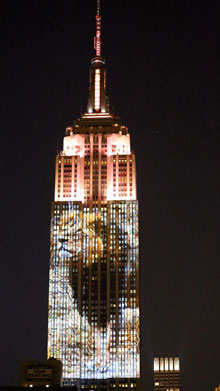
BY LAURENCE HOFFMANN, August 5, 2015
CECIL, the death of a lion as the symbol of reigning injustices in the world
Many questions have arisen surrounding the death of one lion. Summed up, the questions are essentially about the decadency of trophy hunting and the unparalleled uproar on the killing of a single animal.
In America, some are outraged that this event globally overshadowed the abominable spread of police (often deadly) aggressions towards unarmed Afro-Americans. Aren’t human lives as majestic as animal lives? Of course! But this is not the point.
The point is what this death signifies.
A lion has been murdered. One among 600 lions killed every year. He was just one specimen among a multitude of endangered species (160 species are critically endangered Armur Leopard, Black Rhino, Mountain Gorilla, Pangolin, Tiger, African Wild Dog, Elephant to name a few).
In many ways, the concern about the disappearance of wildlife from the surface of the earth has been expressed and actions have been taken. Films have been made as powerful as documentaries The Cove, Virunga, Blackfish or feature films like: The Ghost in the darkness, Gorillas in the Midst, The Bear, even camouflaged as science fiction like King Kong, or films for kids such as The Lion King, White Fang, Free Willy. Sometimes celebrities engage personally in philanthropic endeavors as producers like Leonardo Di Caprio or rendering the suffering of the animals like Joaquin Phoenix’ s video for PETA.
Yet, the senseless killings will persist until humans keep believing that dead animals serve the beautification of their killers. Animal parts become trophy hung on walls or jewels and furs adorning human bodies or sexual enhancement pills. The reason of their imprisonment in parks is the entertainment of bored human beings (concession is made that at times the zoo serve paradoxically to the very same preservation of the animals).
From any standpoint, it is very difficult to justify trophy hunting as anything else than a degeneration of the hunt for survival of primitive cultures.
The death of this lion has sparked a global uproar. He was a lion in a protected park in Zimbabwe, where he had found refuge few years earlier. He had befriended another lion Jericho and together they defended lionesses and their cubs. He was the strongest among all lions in the park. He moved among tourists, did not try to intimidate them instead seemed to be posing for their pictures.
To kill him the hunters played a trick (they lured him out of the protected park with a prey), hurt him with a bow, tracked him down after 40 hours of grueling suffering, to then shoot him with a gun. They tried to cover traces by attempting to destroy the collar that the Oxford University had on him since several years. Which part of this is legal?
On the other side is the story of the hunter. Walter Palmer is a dentist in Minnesota, previously in trouble with the law for having sexually harassed an assistant in his practice and having been convicted 1 year probation for the killing of a bear in Wisconsin. He is a hobby hunter ready to spend up to $50,000. As soon as the outrage about Cecil’s death broken out, he went into hiding not without blaming the Zimbabwean guides for having reassured him the hunt to be legal. How can such an experienced hunter travel to a country being mindless of the laws and the culture of that country? Is trophy hunting really just a game that money can grant without further implications? Walter Palmer is a case of cowardice and vanity or, to quote Jimmy Kimmel “if you can not get an erection, then have a pill for…it works great…”….no need to kill an animal to pride oneself ….”it’s just vomitus…”.
This is the context of the killing of this lion. He was not just another lion. He was Cecil. He looked straight into your eyes.
Why no other lion, no other endangered animal, has gathered so much attention, but Cecil? Because through his particular attitude he has surged to a symbol. “No violence” professors like Martin Luther King and Gandhi are symbols from the past. In our contemporary world, is currently gathering so much attention and unexpected reaction the death of the baby burned alive Ali Darweesh? To briefly observe an event like this that just happened outside of the American borders, completely estranged from the very same American society, but belonging to a situation of established conflict geographically situated in Israel-Palestine, where many kids have already died, the death of this singular kid has generated so much uproar probably because of the context of his death and because of that picture: the baby is looking into your eyes.
In past history the death of a charismatic individual has moved the social consciousness towards a radical change. Therefore sadly enough Cecil’s death (a charismatic animal) is per se an opportunity to convey a far stronger message. It might signify the opportunity to focus the battle to save wild life from total disappearance. Already all major airlines flying into the USA have (finally) banned the transportation of trophies. Will this help to ultimately discourage trophy hunters from hunting abroad? If so, how can we protect American wild life? Will the global uproar push governments to agree on persecuting illegal hunters (both present and past) and on absolutely impeding trophy hunting?
If the chase was the motivation for the hunt, then countries like Kenya and others have found more lucrative ways to satisfy these tourists. It is called ecotourism and what it entails is simply the tracking down of wildlife in their habitat (in limited area and times of the day and year for preservation purposes) and the taking pictures of these animals alive.
If instead trophy hunting is so decontextualized from the social structure of the hunt (so that the hunter is not aware of the community surviving of the very same existence of the hunt animal), then why note promote (decadent) video games?
The costs involved in trophy hunting also arise another question, related to the social consciousness of the hunters: how can they justify the spending of about $750,000,000 every year (given that the hunt costs $50,000 and about 15,000 Americans travel the world to hunt), instead of helping invest in their community (by contributing to education, food for the poor, hospitals or other services)?
So the question is what kind of human beings are trophy hunters? What is the pychological/social explanation of their selfish destructive and dismissive behavior? Is there any pending cultural reason? In the case of Americans is the reason lying in an excessive competitive society for “excellence”? Or is it the arrogance of the ignorant? Or perhaps, just simply a lesser form of white supremacy reigning mostly among the richest (politically right winged) men?
Is the common denominator between the murder of Cecil the lion and the killing of young African American men so obvious? Is there any hope for the recovery of the sense of a humanity living in structured societies, for intellectual growth, for reconciliation, solidarity, community? Police officers could learn that they are integrative part of the community, trophy hunters could learn that life is beautiful and Viagra or videogames indeed viable alternatives. And we all could learn to communicate more with our fellow citizens and work together for a better world.
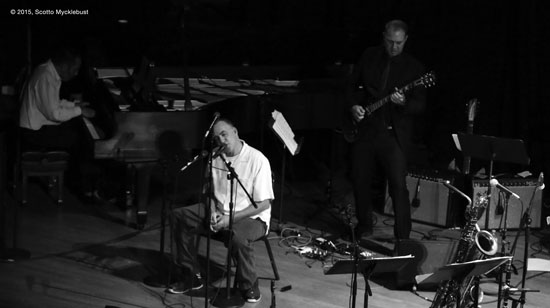
Published in REVOLT MAGAZINE Special Edition
By LAURENCE HOFFMANN, July 27, 2015
John Lurie at Townhall 2014
Lurie’s artwork carry the viewer in their own suspension. What you see is not out there.
What the title says leads to disbelief. It is and it is not, both ways are possible. The intrinsic possibility of the contradiction becomes the essence of the work of art. Contemplate one painting. Stand there, get lost, let the imagination to take over, fall in a dreamlike state of mind, and be caught into the vision so that only now you’ll understand the influence of the poetry inherent to Lurie’s work does to you.
Amazing how the titles do their magic. And yet, the paintings themselves carry that metaphorical essence. They are watercolors, the essence of the color is diluted by the water in a deceptive transparency. What you see, is not there but beyond the page, sunk in the page. It’s delicate as delicate are most of the motifs, the flowers and the caligrafic signs, language of an antique culture, not here any more, never here.
Watch at lurie’s work and deepen yourself in the aesthetic enjoyment. Or, reflect about the titles, see their meaningless sense. Or, again, just fall in uncosciousness and enjoy the trip in dreamland. If you need an attempt of art historical criticism, we could interpret Lurie’s art as the meeting of Chagall, Magritte, Tanguy, Bosch and Clemente. If you wish an analysis of the biographical background then Lurie’s music riverberates in the paintings. Every instrument produces unexpectedly new sounds and the sounds tell a narrative. Evry color blend in each oterh smoothly in a pleasant dialogue., John Lurie is a storyteller, screaming for his salvation.
“love every single title of your paintings! Color, words and music...transcendental
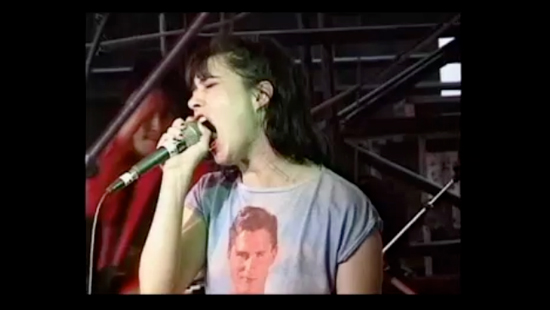
Published in REVOLT MAGAZINE
By LAURENCE HOFFMANN
What does it mean to get punched in the face by Courtney Love?
Video still, Kathleen Hanna. The Punk Singer, a film by Sini Anderson, 2013
Kathleen Hanna is the hero of the documentary “The Punk Singer” by Sini Anderson.
She is a Punk singer, emerged in the 90’ in the USA.
Central piece of her music is her approach to her personal experience. Coming from the tradition of spoken words she reveals in poetic forms the anger, the fears and the hopes. She realizes that only women can understand her music through the common experience of pain, especially that particular pain that can not be told, the pain of victims of sexual abuse. By speaking their pain, Kathleen hopes that women would feel less alone.
A particularity of Kathleen Hanna concerts is that women form the majority of the audience. Not only, but they are invited to be in the front. And men are solicited to move in the back.
She became such a strong voice that she rose as the frontrunner of a feminist punk rock movement called the Riot Grrrl. She was not shy to express herself not only in songs but also in franzies.
Her concerts and her outspoken political position garnered some antipathies. She felt so deeply upset about it that she decided to leave the scene. Until the moment when she came to the realization that it was not important to be understood, but to be true to oneself. This is when she produced, wrote and sung a solo album under the pseudonym Julie Ruin.
Not long after, she founded a new band with her best friend. As with Bikini Kill, now again with Le Tigre is a prevalently solo women band. In a dramatic (and cinematographic) turn of events, right at the top of her career and during an international tour she starts losing her voice. It might have been a metaphor and that’s how she explains it to others and justify herself: “ I had nothing to say anymore”. In fact, just as many years later, she is diagnosed with a sickness, supposedly lyme disease.
We don’t know how the story goes. But we see this film and we can only feel inspired and grateful for this documentary and this almost epical little human adventure. But Kathleen Hanna is real and she is back as a band leader. She rewired a new band now called “Julie Ruin”.
As all great documentaries this is a documentary about an individual but with an universal reach. Its dramatic structure and the mix of her commitment to give women a voice and her personal life achieve inspiring tones. But this is a beautiful documentary about an historical period as well and it’s players. In it micro and macro stories combine fully in a powerful dramatization. This is a documentary about being angry, about feminism, about love, about never resign. In essence the message is : Stand Up!
Published in REVOLT MAGAZINE Issue 4th (July 2013)
By LAURENCE HOFFMANN
Social Activism in Fancy Tones. On how celebrities engage to improve contemporary society
Promoting oneself is commonly accepted, if not practiced, by people in all strata of society. Individuals are more and more managing themselves as brands, a trend put in motion by social media like Facebook and Twitter, that heightens the need to make an original mark in a world over-crowded with competing information. On the business side this applies to advertisements, which effectively use celebrities to create instant familiarity through the immediate recognition of a particular celebrity’s brand.
Recently self-branding has taken a new turn as more popular figures have applied their mass-market appeal to serious social issues. A cursory list of examples includes Mark Ruffalo and Yoko Ono with son Sean Lennon opposing fracking with Artists Against Fracking; Joaquin Phoenix defending the rights of people and animals together with -respectively- Amnesty International and Peta; Leonardo Di Caprio trying to prevent total degradation of the environment with Live Earth and Wildlife Conservation Society; Ziggy Marley, Lady Gaga, Linkin’ Park, BBKing and others making efforts to bring music education into disadvantaged public schools with Little Kids Rock; George Clooney is one of the United Nations Messengers Of Peace and together with Brad Pitt, Matt Damon, Don Cheadle and others has founded Not On Our Watch to condemn the violations of human rights in Darfur, Burma, and Zimbabwe; Angelina Jolie is Special Envoy for the United Nations. These are just a few of the causes in which some of the most prominent American stars emerge as “social activists” and in some cases as “social entrepreneurs”.
For his activities (other than being Walden Smith in Two and a Half Men and occasionally appearing on the cover of magazines with old and new flames) Ashton Kutcher can be considered a “social entrepreneur”. The business activities of his company A-Grade are geared towards improvements in contemporary society.
At TechCrunch, an event that focuses on start-up companies keen to enter the field of technology development and new media held in April/May in NYC, Ashton Kutcher explained the criteria behind the investments of A-Grade and revealed his critical take on corporations.
With his notorious sardonic language typical to an “agent provocateur”, he decries the concept of Big Brother. He warns that societies should prefer the decentralization of the security system instead of accepting that one major entity controls the masses. Ashton proposes that security should be based on the interaction among individuals. This critical approach defines an optimistic point of view on local communities built by the genuine personal relationships between people. Such conviction implies a strong criticism towards the general opinion that our western (and newly BRIC) societies are tending towards a more anonymous global system.
On the practical business level, Ashton focuses on financially supporting and strengthening technological platforms that enhance social sharing. And since interconnectivity is fundamentally an element of mutual trust, it is especially through social media that a stronger connection between individuals can be achieved and local communities are therefore spontaneously formed.
For his eclectic interests and activities, Ashton belongs -together with all socio-politically engaged celebrities- to that figure so much in vogue in the Renaissance, “the Renaissance Man”. In the 15th and 16th Centuries the reevaluation of the models from Antiquity took an important step. Artists and philosophers were called to court (royalty, aristocracy or new bourgeoisie) to engage into the political discourse and became spokes persons, aka ambassadors. What made them “Renaissance Men” was their versatility in various fields of culture, science, politics and the conviction that societies could harmonically entail all these aspects. These societies were literally called Utopia, a term that today has taken on the connotation of “illusionary and unrealistic”.
This lead to an open conclusion: Is social activism in all its forms a sheer idealistic endeavor or can the contribution of mass mediated personae really reach the masses and help make the change?
ArtWorldBlog, February 7, 2013
http://www.tumblr.com/blog/artworldnewspaper
By LAURENCE HOFFMANN
Basquiat today
Basquiat died in 1988. Gagosian just opened with an exhibition of Jean-Michel Basquiat’s works, all big format paintings from the first stretch works to one of the very last premonitory “riding on death”. The work of Basquiat appeals not only to the ones who experienced the ’80 but also to a younger generation of twenty something, including many Afro-Americans. He has become a legend. It is emotional to see this great cultural clash.
I got passionate about Basquiat work immediately. I found ot intriguing exactly for that perfect mix of primitive art and naïf painting with really elaborate intellectual references.
Basquiat’s art is cultivated art. It just has the appearance of being simple. The cultural references transpire through the style (Twombly, Rauschenberg, Rotella, Still) and the writings (bible, words outspoken in the artist presence). The past and the present.
Basquiat is transversal. Basquiat transforms the image of the street artist into art for exquisite collectors. He is revolutionary. His work is unique and yet global (being part of the international art market with recent auction values rising up to $ 26 million). He was an outsider. Like Van Gogh. He damned himself for being a neglected afro American but then exploited it as a manifesto. He got confused. Lost. He died of an overdose just weeks after he cleaned himself in Hawai. In 1988. We are still celebrating the last Mohican.
ArtWorldBlog, February 3, 2013
http://www.tumblr.com/blog/artworldnewspaper
By LAURENCE HOFFMANN
What’s about the Outsider Art Fair?
Nothing is without an observer. One uses language and puts objects of its own empirical perception (Wahrnehmung-take for true) or its own imagination in a relation between themselves and it determines the meaning of reality. The question here is: “What is art?” Paradoxically it is the following definition of insider and outsider art to define art, more than art itself to illustrate which art could be the in and the out. Art is then a territory. Who is not it’s citizen, is therefore a stranger. But in our contemporaneity the stranger is not a scaring nor a ghostly presence. But rather it becomes that almost mythical and legendary presence of the special being.
If there has been a period in history when the artist has been for itself intrinsically an outsider (Van Gogh, Warhol with the factory, …), there has been a period when indeed the artist was a political ambassador (the Renaissance with Rembrandt…). Now, on the contrary, the one rejected from society as a disturbance (disclosed in dark distant rooms), the madman, the mentally retarded or the foreigner (originary from a so called primitive culture), has been elevated to idol of sincerity, ingenuity, transparency. Contemporary society reveals therefore its essence as persistent lie on who we are, and art has become a tool to define one own social status besides the aspiration of monetary enrichment.
Paradoxically the outsider who is not integrated in society enters the art market to introduce a new art form and especially a new art approach. If the masterpiece fascinates because it’s not imitable and can be realized only by a genius, outsider art is easily understandable since often primordial. Technically very basic, it uses signs and typical figures of children’s drawings or of primitive cultures. Yet, even if each viewer would feel proper to affirm “I could do it”, they find themselves at stakes between the admiration for the apparent sincerity of the painter and the awareness that the painter is off. Even if the painter is worshiped (not denigrated anymore), the viewer hides behind his lie and avoids imitating the artist. When Baudelaire wrote that understanding is identifying he didn’t entail the sphere of prejudices and self imposed limits.
Maybe is the viewer indeed the true outsider? Since the viewer doesn’t have the talent to create masterpieces and since the viewer hasn’t the intellectual honesty and the emotional strength to commit the basic act of art brut, they only can abandon themselves to a look full of devotion. The viewer is not a citizen of the world called art. And this might be a provocative conclusion.
By LAURENCE HOFFMANN
Dorfman Projects
Barnaby Ruhe Dialogues. The painter and his work, the painting and its parts, the oeuvre and art history. The making of the painting: gestures and instinct
He does bare no hesitation in front of the blank canvas but like a cartoon hero Barnaby goes on with the brush and “Attack!”. The canvas is transformed in a dynamic mixture of colors. The gestures become seemingly casual brush strokes. Soon Barnaby will give shape to the spots of color. The abstraction will become figurative, or simply something else. Either the painting is going to be a portrait or the welcoming structure for a cut image to interact with the whole.
Barnaby is an avid creator of chaos. And yet he finds a small sense of order when he creates his collages. The added piece can only be inserted in a certain spot of the painting, as if its position was predetermined. Barnaby will not be satisfied until he doesn’t find the fitting place.
Barnaby’s act of painting is meditation. Oblivion. It’s stranger to rational calculation. It’s getting lost and be refund in the process of matching the images, the color, the spaces. Important is the dialogue between the parts of the painting. At the end there is narration.
The collage with the Birth of Adam, Michelangelo’s fresco of the Sistina Chappel in the Vatican Museum in Rome, is not a critical or subliminal interpretation or even confrontation with Michelangelo’s masterpiece. Barnaby simply likes the composition. He likes the creation of a new work of art through the interrelation between his painting and the masterpiece and the dynamic that comes from the juxtaposition of the masterpiece to the painting. Moving the cut image around the surface of the painting invariable possible new works could be created. Only one seems to be right. It is dynamic, it is conflict, it has a deepening sense of space, it is a funny correspondence of spots as if both works were always supposed to stay together.
Barnaby groans, mumbles, exclaims, scratches his beard, makes sounds with the tongue… until the final relationship is established. Hurra!
Art history in the background: 20th and 21th Century art movements in Barnaby Ruhe’s art works
Barnaby Ruhe’s art goes beyond all definitions and movements of the 20th and 21st century but also melt them all together. It wouldn’t seem awkward to create a new movement to describe Barnaby Ruhe’s art: Transcendent Art.
If it transcends genres and art historical momentums like action painting for it’s typical casual gesture, or the somehow submissive relationship with the surrounding world of the impressionism, or the strongly subjective and suffered in-der-Welt-Sein of the expressionism, or even the unleashed working of the mind in the automatic writing and in the intuitive combination of various images towards a metaphorical language of the surrealism, or finally the collages of words in poems and manifestos and the collages of images typical of certain cubism, Barnaby’s art transcends reality as well…It goes behind the appearences of the models and searches for their soul as it goes behind the given images. There must be an intrinsic message in the work of art. Or perhaps not.
What Barnaby definitely he is not: he is not an artist who applies technology in any form. No video, but paper and wood. He is primordial. He works with the intuition or better with the instinct. He has an immediate, not mediate approach to art and people. His abstraction is never geometrical but gestural. It’s action. It’s impetus.
A tentative approach
Barnaby’s art is narrative.
In the collages the dialogues between the artist and pre-build images from art history, social history or commercials and in his portraits the dialogues between the painter and his muses, are suspended in a world of possible but surely metaphorical meanings. What strikes in Barnaby Ruhe’s oeuvre is the Imminent, the unsolved fascinating range of interpretations.
Barnaby’s paintings are performances as well.
Either he portraits people, random visitors or old friends, surprising the portraited by illuminating irreverent revelation. He is impressed by the model, to whom he grants a first glance and let then himself be driven by the inspiration in a sort of looking through the apparent. He gives up his art in gestures and in intuitive choices of colors. Then the dialogue becomes intense and the inner self of the model is revealed to the painter who fast, very fast, gives the spots of color a shape. The faces and sometimes the bodies of the model become vibrant on the canvas. Astonishment. That’s the word.
Or in his collages, Barnaby recognizes where the cut images come from, still he is resilient on making art historical references. His art is not didactic nor doctrinal. It’s emotional. Irrational on purpose. Not forcely sensical. It’s not conceptual or perhaps it is, since the collages have only sense when a certain image is put in a certain place on the painting. It might be that exactly this contradiction, this confusion, is its strength.
Barnaby’s art is irreverent and yet incredibly honest and revealing.
It’s metaphysical in a non religious and non historical way. It is just personal but at the same time it stays in dialogue with any viewer, with the model, with the unprepared. It’s not an art that offend the viewer. It’s not scaring. It’s immediate. It’s approachable. It’s inviting. To the dialogue. To the observation. To the creation of continuosly new narrations. It allows every and each viewer to progress in their own sense of the work of art. Without prejudices. Barnaby’s art awakens association of thoughts and subliminal puzzling of artifacts.
Anyway, what are we looking for in art? Inspiration? Deviation? Enlightment? Amusement? Defiance? Confidence? Happiness? Confrontation? Stimulation?
Barnaby’s art is pleasurable. It’s intriguing.
Barnaby‘s painting take the public into the work, in a sort of fantascientific trip into the abyss of art itself. Let’s go. Let’s do it!
The biography of the artist
The biography will tell that he is a teacher at NYU and perhaps a shamanista(?memo) Would it be logical to discuss his art through the filter of shamanistic and art historical critical approach? Sure, go on, you can take it from here and start your own interpretative path. That’s the freedom of true cultural consumism.
This show: postcards in boxes
For this show, Barnaby transformed his postcards in standing objects. Given a wooden frame, the collages that once could be send and would transfer messages, now have become objects. They can stand on tables and shelves. Perhaps art lovers and collectors might find proper and improper uses (a box for jewellery and other favorabilia?). That’s how art is a popular experience.

September 2006
Exhibition of french artist Isabelle Fordin in occasion of the Notte Bianca in Rome (redaction of presentation of artist’s work)
|






